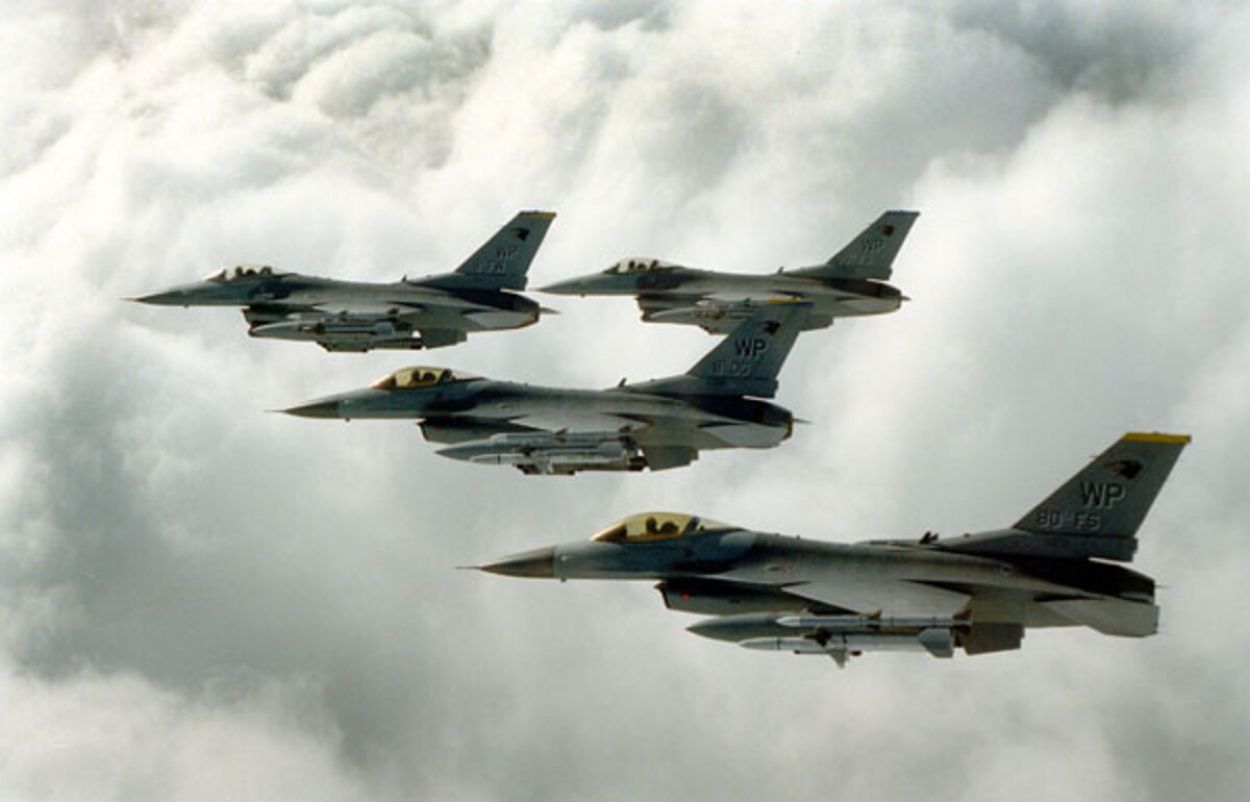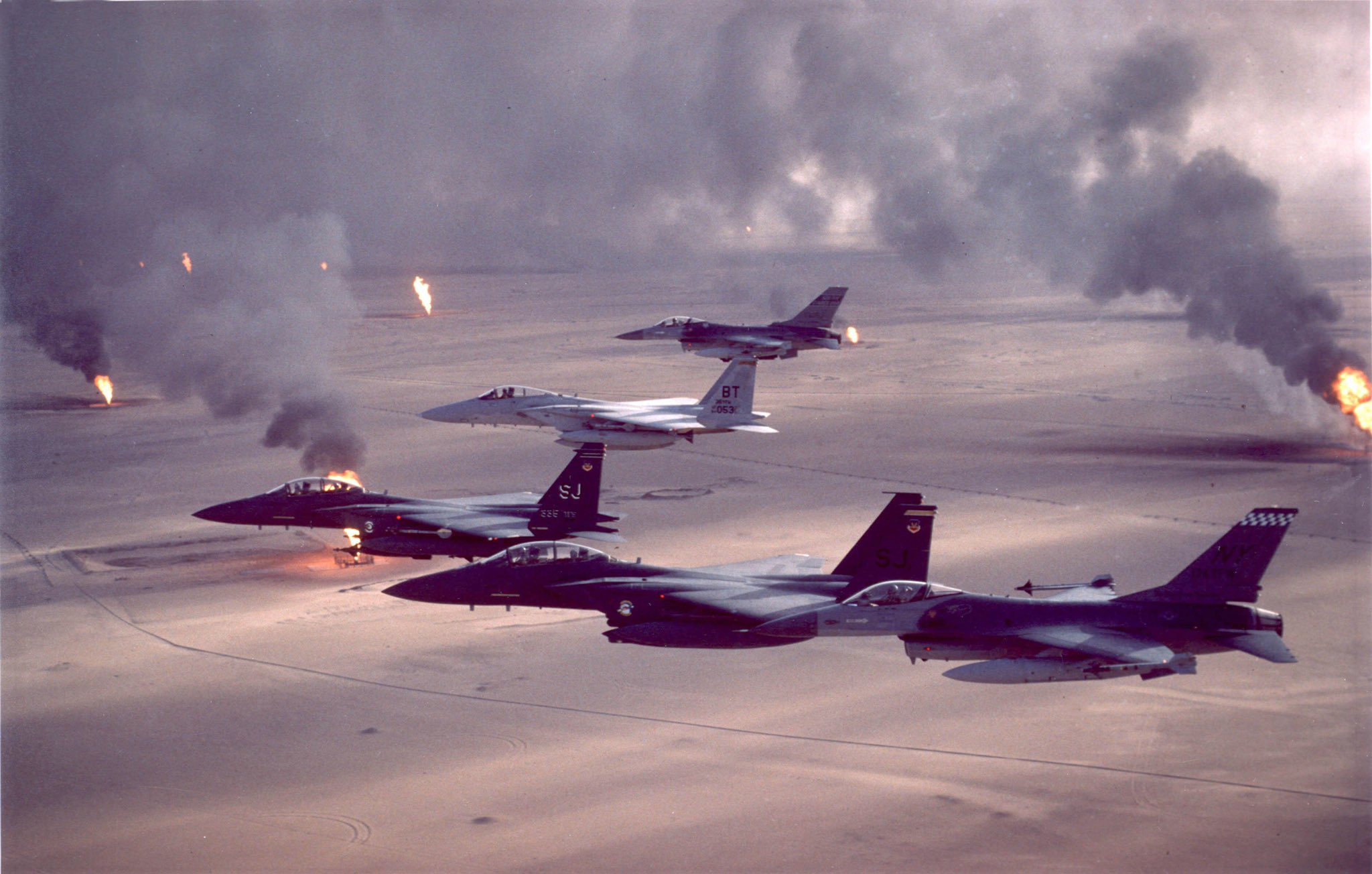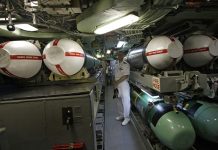From playing the role of “Aggressor” in the US Navy’s ‘Top Gun’ school to combat missions over Iraq, to precision strikes against the Taliban in Afghanistan, to downing scores of enemy aircraft, the F-16 Fighting Falcon has seen it all.
Back-To-Back Failure In Hypersonic Testing, US Mulls Moving Away From B-52 Bombers To B1B Lancers
If one has to summarise the four-and-a-half decades-long operational history in numbers, the F-16 Fighting Falcon, since its first flight in 1979, has seen over 30,000 worldwide air-to-air and air-to-ground combat sorties.
In an operational career of four and a half decades, the combat jet has seen 154 engagements that have resulted in at least 210 confirmed kills with two combat losses and four fratricides.
The compact, single-engine, multi-role fighter aircraft has proved its mettle in air-to-air combat and air-to-surface attacks. The fourth-generation fighter jet has maneuverability and combat radius (the distance it can fly to enter combat, fight, and return) greater than most potential adversaries. It can locate targets in all weather conditions and detect low-flying aircraft in radar ground clutter.
The F-16’s latest variant has earned the moniker of Viper for its sharing characteristics with the head of the snake. The F-16V has advanced capabilities to operate with the 5th generation fighter jets like F-35 Lightning II and the F-22 Raptor. The last F-16 was delivered to the US Air Force in 2005, and now the F-35 is set to replace the F-16s in the US Air Force.
Development History
The US and four NATO allies – Belgium, Denmark, the Netherlands, and Norway – developed the aircraft. It was manufactured by General Dynamics (now called Lockheed Martin). The components for the aircraft were manufactured in all five countries. Recently, Portugal also joined the consortium.
Over 4000 F-16s are operational in 25 countries across the globe. The primary user of the aircraft is the US, followed by Israel. The NATO allies have also inducted the aircraft in their fleet.
The biggest advantage that the aircraft has is its high maneuverability, given by its “relaxed stability” design. The airframe of the warplane has been intentionally made unstable, with the center of the mass and lift being closer than in other aircraft. This makes the aircraft respond quickly to the pilot’s control input with clean maneuvers.

The F-16 was the world’s first aircraft to be aerodynamically unstable by design. Its center of gravity was towards the rear end resulting in its natural tendency to have its nose up rather than down.
Level flight is created by pushing the tail up rather than down, providing an extra push to the aircraft while taking off. It was also the world’s first fighter jet to use a side-mounted control stick. This lets the pilots rest their arms while flying, giving them better plane control in high-G maneuvers.
Operation And Deployment
The F-16s have seen extensive combat. It played a stellar role in the 1986 movie Iron Eagle. It serves 25 air forces across the world. But it has seen the maximum action as part of the Israel air force, including 47 kills.
The F-16 scored their first air-to-air kill in the Israeli Air Force service when they shot down two Syrian Mi-8 ‘Hip’ helicopters in April 1981 – its first combat deployment.
Just three years after inducting the F-16s in their inventory, Israel used the Fighting Falcons to strike the Osirak reactor near Baghdad, setting back Saddam Hussein’s nuclear weapons program. The flight of 700 miles was considered out of the fighter jet’s range, but eight Falcons managed to drop 2000-pound bombs on the target.
Their combat worthiness has made the Israel Air Force make some unique modifications to the aircraft.
Pakistan Air Force (PAF) was the second country to deploy the F-16s to combat against the Soviet-backed Afghan Air Force. Between 1986 and 1990, the PAF claimed that the F-16s shot down 10 Afghan and Soviet jets, helicopters, and transport planes.
Soviet and Afghan records, however, only confirm six losses – four Su-22s supersonic fighter bombers, one S-25 “flying tank” piloted by future Russian vice president Alexander Rutskoy and one An-26 cargo plane. The PAF lost a single F-16 struck by a missile fired by its wingman.
Throughout the conflict, Pakistan F-16s claimed to have destroyed several Mi-8 helicopters, another An-26 on a reconnaissance mission in 1989, and an An-24 transport aircraft.
Operation Desert Storm, or the first Gulf War, was the first combat deployment of the F-16s by USAFs. The combat jets flew 300-400 daily sorties throughout the war, with a strike rate of 25 percent. These fighters attacked airfields, military production facilities, Scud missile sites, and other targets.
On January 19, 1991, the Falcons conducted the first day-light raid of Operation Desert Storm and attacked targets in Baghdad.
The USAF lost two of its Falcons, and pilots were taken prisoner. The USAF’s Falcon tasted their first blood on December 27, 1992, when they shot down an Iraqi MiG-25 with their Advanced Medium-Range Air-to-Air Missile (AMRAAM). It was also AMRAAM’s first kill.
After that, the second kill of the USAF was when it destroyed an Iraqi MiG-29 with an AIM-120 AMRAAM missile in January 1993.
In 1994, the USAF achieved its first triple kill since the Korean War when two USAF F-16s shot down four Serbian Soko G-4 Super Galebs over Bosnia Herzegovina. In 1999, the aircraft shot down another MiG-29 over Serbia.
A decade later, the multi-role jet was deployed in Operation Enduring Freedom in Afghanistan and Iraqi Freedom.
When F-16 Took Out 500 Enemy Combatants Through A Sonic Boom
The F-16s have used precision weapons to neutralize adversaries around the world. But in March 2003, two F-16s saved 52 British special operators surrounded and outnumbered by 500 Iraqi troops.
When the F-16s reached the place to answer the distress call, they could not see anything. The night was dark, and the sky was overcast. Despite the night vision goggles, they could not make out friends or foes. If they launched their bombs, they could gut both the besieged British and the besieging Iraqis.

In the meantime, the situation on the ground deteriorated. The Iraqi troops were soon going to outrun the British troops. Lt. Col. Ed Lynch did some quick thinking and climbed to an altitude. From there, he went into a dive building up sonic energy around his plane as he approached the speed of sound.
As he approached the ground with the massive amount of sound energy around his cockpit, he broke the sound barrier pointing the bulk of the energy at the ground, where he believed the Iraqi troops were, and pulled up at a height of 3000 feet from the ground.
When the sonic boom hit the ground, the Iraqis thought the F-16s were dropping bombs and firing missiles. This was enough for the Iraqi troops to disperse, and the British Special Operators managed to escape.
The F-16 pilot learned about the mission’s success only when it returned to the base.
Despite its stunning success, US Air Force Secretary Frank Kendall said in an interview that transferring F-16 fighter jets to Kyiv will not “fundamentally alter the balance” in the Ukraine war.
He emphasized that arming Ukraine with F-16s “creates intermediate capabilities that the Ukrainians currently do not have, but this will not fundamentally alter the situation,” since “air power has not yet been a decisive factor” in the war.
- Ritu Sharma has written on defense and foreign affairs for over a decade. She holds a Master’s Degree in Conflict Studies and Management of Peace from the University of Erfurt, Germany. Her areas of interest include Asia-Pacific, the South China Sea, and Aviation history.
- She can be reached at ritu.sharma (at) mail.com




